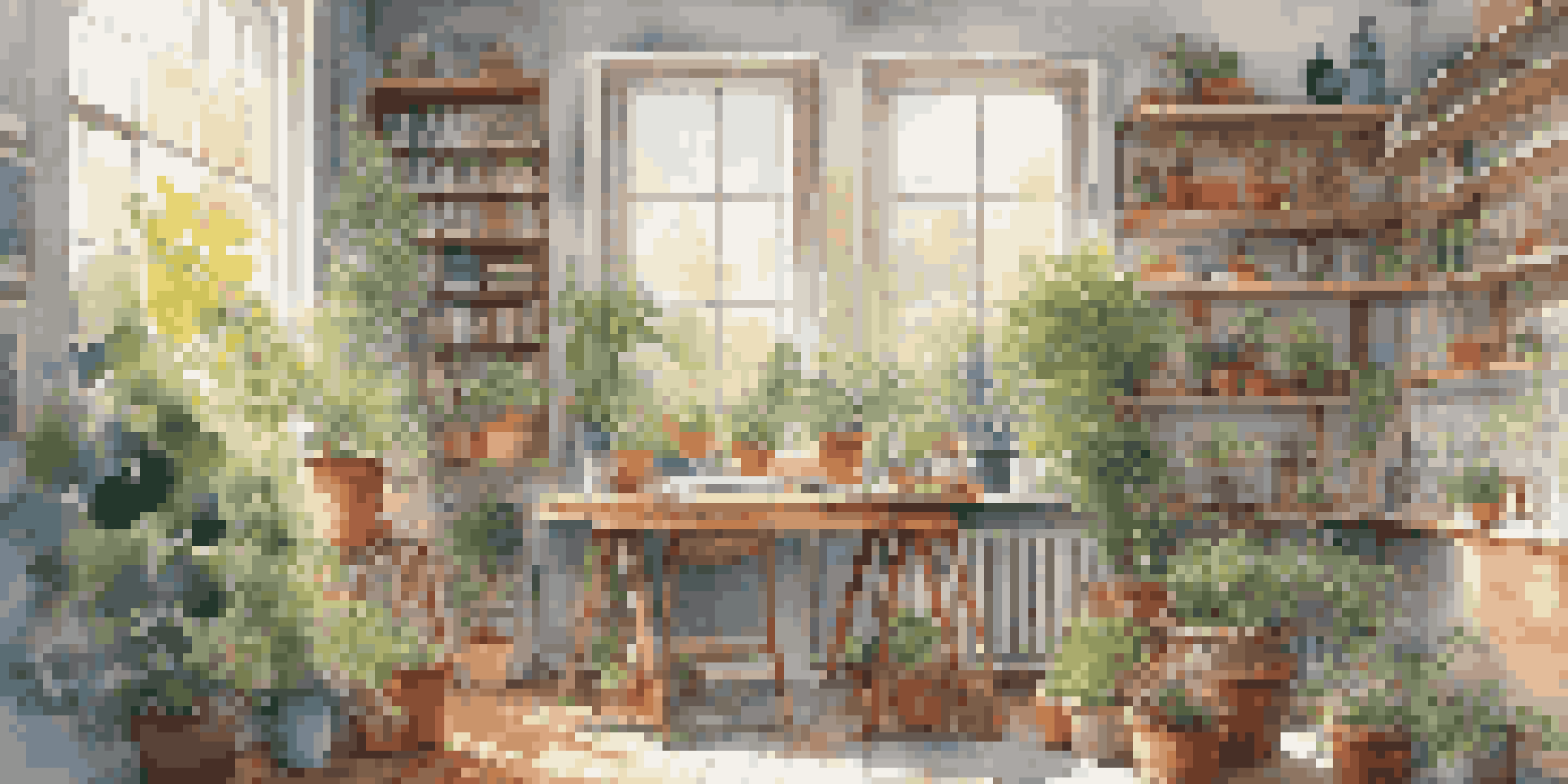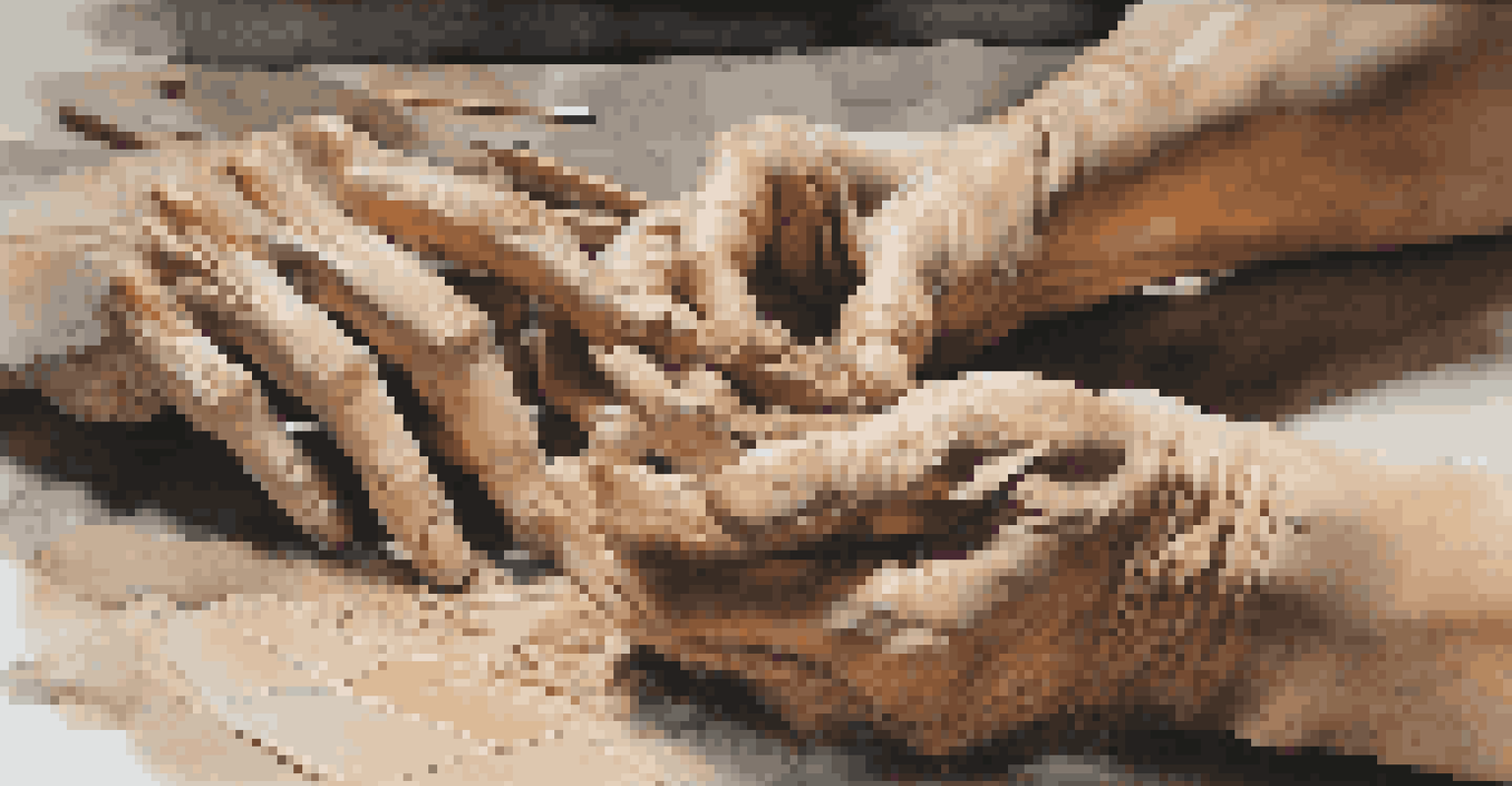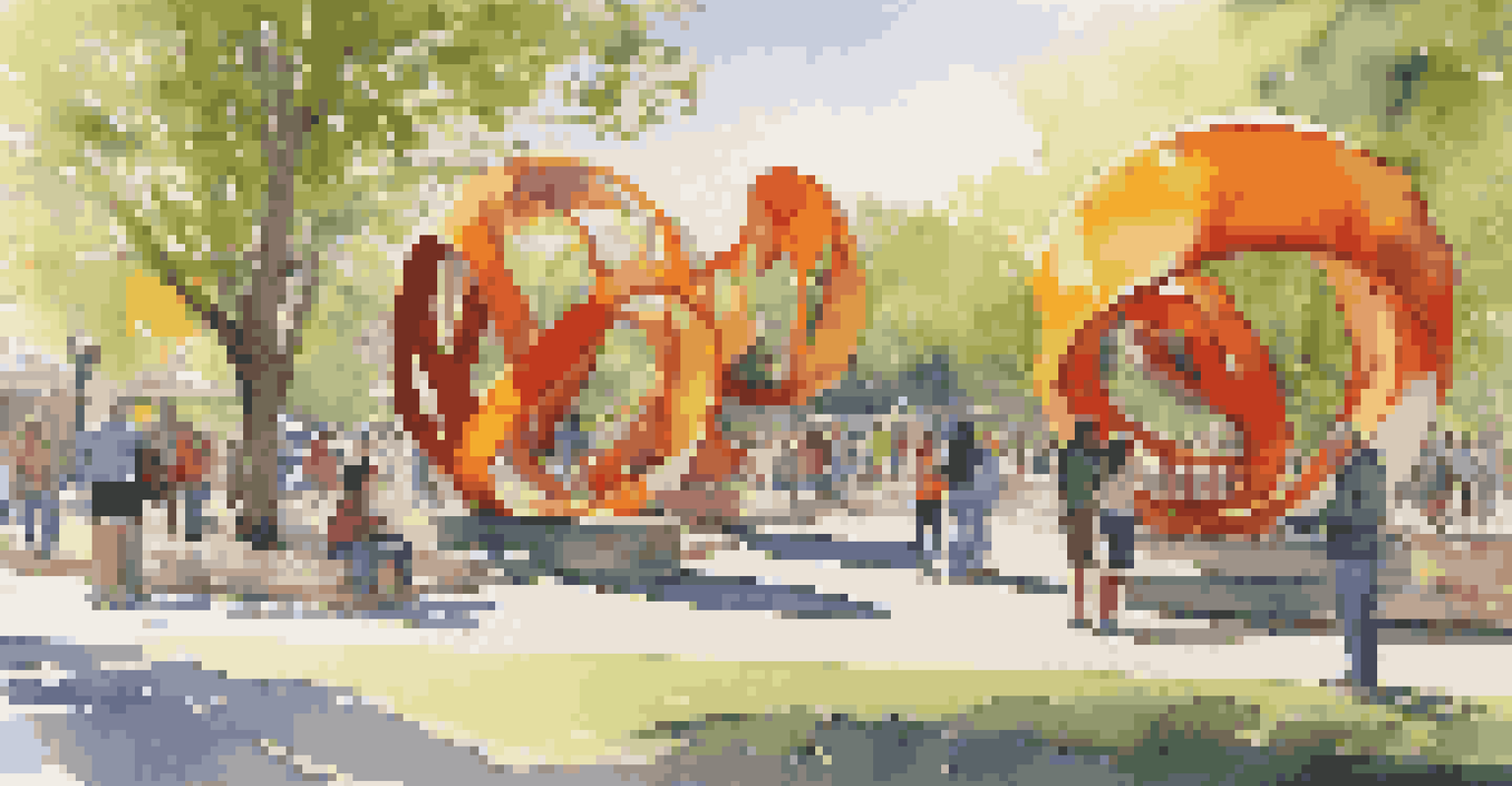The Ethics of Art Documentation: Preserving Artistic Intent

Understanding Art Documentation and Its Importance
Art documentation refers to the processes involved in recording, preserving, and sharing information about artworks. This practice is crucial for artists, historians, and institutions alike, as it ensures that the context and nuances of each piece are maintained over time. Just like a family photo album tells the story of your life, art documentation captures the journey of an artwork from conception to exhibition.
Art is not freedom from discipline, but disciplined freedom.
The importance of art documentation cannot be overstated. It serves as a bridge between the artist's intent and the audience's interpretation, offering insights that might otherwise be lost. A well-documented piece can speak volumes about the cultural, social, and personal narratives that shaped it, enriching the viewer's experience.
Moreover, effective documentation can also safeguard against misrepresentation or misunderstanding. Think of it as a guide for future generations; without it, the meaning behind an artwork could shift dramatically over time, potentially straying far from the artist's original vision.
The Role of Artistic Intent in Documentation
Artistic intent refers to the purpose and meaning an artist aims to convey through their work. Understanding this intent is essential in documentation, as it shapes how the artwork is presented and perceived. Just like an author’s intended message can change the reading of a novel, an artist's intent can significantly impact the interpretation of their work.

When documenting art, it’s vital to capture the artist's voice and perspective accurately. This often involves interviews, written statements, or even video recordings where the artist discusses their process and motivations. These resources can serve as invaluable tools, providing clarity and depth to the artwork’s narrative.
Art Documentation Preserves Context
Art documentation captures the journey and context of each artwork, ensuring its meaning is preserved for future generations.
However, the challenge lies in ensuring that the documentation doesn’t overshadow the artwork itself. Striking a balance between providing context and allowing the piece to speak for itself is key, much like seasoning a dish; too much can overwhelm the palate, while just the right amount enhances the experience.
Ethical Considerations in Art Documentation
Ethics in art documentation encompasses various factors, including authenticity, consent, and representation. Artists deserve to have their work documented in a way that honors their vision and intentions, ensuring that their voice is accurately reflected. This ethical approach is similar to how journalists must report the truth while respecting their sources.
The job of the artist is always to deepen the mystery.
Consent is particularly crucial in collaborative works, where multiple artists may contribute to a single piece. Documenting such works requires sensitivity to each artist's input and perspective, as misrepresentation can lead to conflicts or misunderstandings. Just as in any partnership, clear communication and mutual respect are vital.
Furthermore, ethical documentation should consider the implications of how and where art is shared. For instance, an artwork rooted in a specific cultural context can be misinterpreted when removed from its original setting. Therefore, preserving the integrity of the piece and its story is paramount, ensuring that it resonates authentically with its audience.
Challenges in Preserving Artistic Intent
One of the primary challenges in preserving artistic intent is the subjective nature of interpretation. Different viewers may have varying perspectives on the same piece, influenced by their backgrounds and experiences. This diversity of thought can enrich discussions around art, but it also complicates the documentation process.
Technological advancements also present both opportunities and challenges. While digital media allows for enhanced dissemination of information, it can also lead to oversimplification or distortion of the artist's message. It's akin to playing a game of telephone; the original message can become muddled as it passes through various channels.
Ethics Ensure Authentic Representation
Ethical considerations in art documentation prioritize the artist's intent and ensure that their voice and vision are respected.
Moreover, the evolving nature of art itself poses a dilemma. Artists may revisit and alter their works, leading to questions about which version should be documented. Just as a growing tree can take on new shapes with time, so too can an artist's vision evolve, making it essential to decide how to best represent their journey.
The Impact of Cultural Context on Documentation
Cultural context plays a significant role in how art is created and understood. The societal influences surrounding an artist can shape their work, making it crucial to document these factors alongside the artwork. Without acknowledging the cultural backdrop, the essence of the piece may be lost, much like a book without its historical setting.
For example, a piece created during a time of political turmoil might convey messages that are deeply rooted in that specific context. Documenting such works requires an understanding of the broader narrative at play, ensuring that viewers appreciate the artwork's significance. This is particularly important in multicultural societies where diverse perspectives intersect.
Additionally, documenting art with cultural sensitivity involves recognizing the histories and experiences of various communities. It’s essential to approach these narratives with respect and care, much like a traveler must honor the customs of the places they visit, ensuring that the richness of each story is preserved.
The Future of Art Documentation: Innovations and Trends
As technology continues to evolve, so too does the landscape of art documentation. Innovations such as augmented reality (AR) and virtual reality (VR) are transforming how audiences engage with art, providing immersive experiences that can enhance understanding. These tools allow for deeper connections, enabling viewers to step into the artist's world and experience their intent firsthand.
Moreover, the rise of social media has democratized art documentation, allowing artists to share their processes and thoughts directly with audiences. This shift empowers artists to control their narratives and engage with their viewers in real-time. It’s reminiscent of the way personal blogs have changed the publishing landscape, giving voice to a wider array of perspectives.
Technology Transforms Art Engagement
Innovations like AR and VR are enhancing how audiences engage with art, allowing for immersive experiences that deepen understanding.
However, with these advancements come ethical considerations. As we embrace new technologies, it’s essential to remain vigilant about maintaining the integrity of the artwork and the artist's intent. Just as we must navigate the fine line between innovation and authenticity, art documentation must evolve with a commitment to preserving the core values of creativity.
Conclusion: Striking the Right Balance in Art Documentation
In conclusion, the ethics of art documentation revolve around preserving artistic intent while navigating the complexities of representation. It requires a thoughtful approach that respects the artist's voice and acknowledges the diverse interpretations that arise from their work. Much like a skilled conductor leading an orchestra, effective documentation harmonizes various elements to create a cohesive narrative.
As we move forward, it’s crucial to embrace both tradition and innovation in the documentation process. By leveraging technology and understanding cultural contexts, we can create richer, more meaningful connections between art and its audiences. This balance allows the artwork to resonate powerfully, echoing the artist's original intent.

Ultimately, art documentation is not just about recording; it's about storytelling. By honoring the narratives behind each piece, we ensure that the spirit of creativity continues to thrive for generations to come.